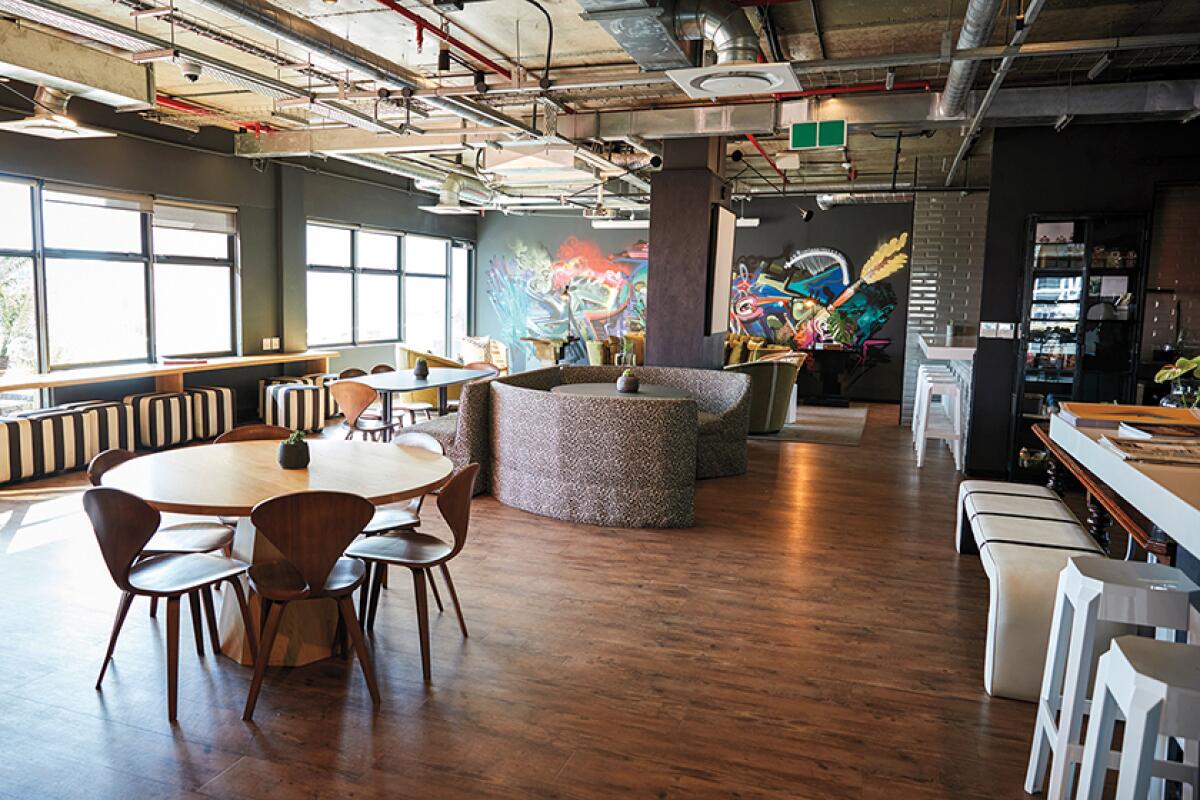2022 Trends Report Sheds Light on the “New Normal” of Office Design

- Share via
The American Society of Interior Designers (ASID) has released its anticipated 2022 trends report, part one of the three-part outlook report revealing significant industry trends and implications, economic indicators, and shifts in the interior design profession.
With the goal of equipping designers with the tools they need for a successful year, the Trends Report delivers essential insights to guide the profession through the next era of pandemic design. Previously known as the Outlook and State of Interior Design Report, the new, three-part 2022 Outlook Report launches with Trends, to be followed by parts two and three, the Economic Outlook and State of Interior Design, respectively, later this spring.
Compiled by the Society’s research and knowledge team, the Trends Report examines topics that inform design practice developments, such as demographic shifts leading to new occupant needs and lifestyle trends based on occupant priorities. The Report connects these broad ideas directly to the profession, offering designers a comprehensive perspective on the year ahead and outlining strategies needed to make an impact in their practice and on the lives of those they serve.
“ASID is proud to share this important research as a guide for designers,” said ASID CEO Gary Wheeler, FASID. “As the only design association for all sectors, we are committed to reporting on industry trends, the ongoing effects of the pandemic, and how it has impacted practitioners of all types. Our research arms designers with the resources they need to elevate their practice and create a positive impact on the world around them.”
The report finds that health and wellness continue to dominate both residential and commercial design due to the lasting effects of the pandemic. Sustainability has also shifted from a nice-to-have to a must-have for designers and consumers alike.
Additional highlights include:
• Wellness is a top priority. About 53 million adult Americans and about 7.7 million youths experienced some form of mental illness in 2020. Due to this, people will promote good health and an overall sense of wellbeing. Clients are gravitating toward simpler, cleaner, easier-to-maintain designs, as well as outdoor living spaces and places where they can relax and restore from the increased stresses of everyday life.
• Workplace wellness is a must for employees and businesses. Nearly a third of the full-time employees currently working from home say they would never come into the office during the week. To lure employees back to the workplace, businesses need to rethink their office design to provide environments that are meticulously clean and safe, but also less stressful.
• U.S. population growth has stalled. Between 2010 and 2020, the nation’s population growth increased by only 7.4 percent, the slowest growth rate since the Great Depression. The dip is part of a longer-term trend tied to the aging of the country’s White population, decreased fertility rates, and lagging immigration.
• Smart technology goes mainstream. Smart products, such as lighting systems, carbon monoxide detectors, and digital thermostats have grown in popularity as they become simpler to use (i.e., voice-activated devices make them much easier to operate and coordinate). The report also details industry insights impacting all sectors of design, highlighting health and wellness, technology, and business trends. It finds:
• The future of office design is evolving. As ways of working and employees’ attitudes toward work are changing, employers and designers are trying to figure out what the office of the future should look like. Emerging trends include allowing more freedom and flexibility to employees to design their own spaces, creating experience-based environments with more sensory inputs, the return of the private office, and providing more spaces that support team and interactive activities.
• Hotels and resorts look to refresh and renew their interiors as they await the return of guests. Those in the hospitality industry are busy refreshing their properties to improve comfort and safety and update their aesthetics. Some current trends include replacing select textiles and wood with porcelain, glass and composite materials. Also at the forefront are strategies that provide personal control of light and temperature, biophilia, and ergonomics. Statistically, wellness tourism is projected to generate $436 billion in 2022.
• Wellness real estate outpaces other types of construction. Environments designed intentionally to protect and enhance occupant health and wellbeing comprise a growing portion of construction projects. Wellness features and healthy design will become nearly ubiquitous in luxury properties and in workplaces, with a growing emphasis not just on wellbeing but on improved human health. The total number of wellness-certified building projects worldwide from two big players, The Well Building Standard (WELL) and Fitwel, have grown ninefold in the last three years. Certifications have skyrocketed from 200 in 2018 to 952 in 2020.
• In a tight job market, employees are demanding higher salaries and more benefits. Firms are having a difficult time hiring with open positions far outstripping qualified candidates. Looking ahead, this trend is likely to continue as more than one in five responding A&D firms indicated that their primary staffing issue would be finding candidates.
The report showcases interior designers at a pivotal time in the history of the profession, witnessing changes in technology, major demographic developments, and societal and attitude shifts. Designers will once again be called to serve and offer guidance as the industry evolves away from COVID-19 and into a new era of interior design.